Annals of Environmental Science and Toxicology
Evaluation of the effect of temperature changes on chlorine mass deterioration in the water supply network using EPANET (II) qualitative-hydraulic simulation system
Omid Zabihi1, Maryam Siamaki1, Reza Aghlmand2 and Mohammad Gheibi2*
2Department of Civil Engineering, Ferdowsi University of Mashhad, Mashhad, Iran
Cite this as
Zabihi O, Siamaki M, Aghlmand R, Gheibi M (2021) Evaluation of the effect of temperature changes on chlorine mass deterioration in the water supply network using EPANET (II) qualitative-hydraulic simulation system. Ann Environ Sci Toxicol 5(1): 086-089. DOI: 10.17352/aest.000042Environmental and health organizations believe that water entering the water distribution network should always have a certain amount of free chlorine remaining (at least 0.6 mg/L according to standard 1053). The founding philosophy of this standard is based more on the possibility of re-contamination in the water network. Experience in the operation of urban water distribution networks shows that various factors can lead to microbial growth and contamination in treated water. These parameters include the presence of biofilms in parts of pipes, the entry of external contaminants (microorganisms active in the soil) due to the phenomenon of leakage, the entry of air pollution in open tanks and the transfer of pathogens intentionally or Unintentionally pointed out. However, factors such as the reaction of chlorine with the wall of the distribution system pipe or the reaction with the matrix of materials in the water lead to a decrease in the concentration of free chlorine remaining throughout the network. Meanwhile, chlorine mass decay is a function of the materials in the water and the water temperature in the network. Therefore, this study intends to evaluate the effect of temperature changes on the residual chlorine concentration of the network using qualitative-hydraulic modeling and simulations. Studies have shown that in different time series, the remaining free chlorine changes up to 32% in different months of the year.
Introduction
One of the missions of the water resources and water supply management system is to maintain the physical, chemical, and microbial quality of water in the entire water supply network. Raw water (surface water) enters the municipal water treatment plants after treatment and disinfection are disinfected and enter the water supply network. In the secondary or final disinfection process, various oxidizing compounds and substances such as chlorine gas, chlorine dioxide, sodium hypochlorite (bleach), ozonation, or irradiation systems such as UV are used [1]. But chlorine and its compounds are of special importance due to the residual effect on the water supply network [2]. After chlorine injection, part of it reacts with organic substances and compounds in the water matrix, which is called compound chlorine. The rest of the chlorine is left free in the water (free chlorine) to oxidize in the event of microbial or chemical re-contamination [3]. However, in the real conditions and dimensions of the network, the concentration of free chlorine remaining changes and decreases due to the two phenomena of wall decay and mass decay [4-6]. Chlorine wall degradation is due to the reaction of chlorine to the wall of the water distribution network pipe, which depends entirely on the material and age of the water pipe. This is while the mass decay of water is a function of the matrix of materials in water and its temperature. Alyan Koopayi and Haghighi [7] conducted a study on the effect of temperature on chlorine decay coefficients in the water distribution network. In this research, EPANET dynamic qualitative model has been used. The results of this research showed that the reaction coefficients in the fluid mass follow the first degree, whose values in summer and winter are -0.53d-1 and -0.207d-1, respectively. Next, the researchers found that the rate of chlorine degradation with the pipe wall was zero. The coefficients obtained for summer and winter were 3- and 2- mg/m3/day, respectively. Ameri Safiabadi, et al. [8] in a review study to determine the reaction rate and kinetic coefficients of chlorine decay in water distribution systems. It should be noted that in this study, the main approach was based on the principles of network operation. Ahmadi Barghani, et al. [9] also investigated the rate of chlorine deterioration in the leached water supply network (a network that has been cleared of biofilms by disinfection). The mentioned research has been done in the branch network of Darab city. The results of this study showed that after rinsing the grid, the rate of chlorine degradation decreases; So that the reaction constant coefficient (k) before the washing operation was about 0.00056 lit/min and after this operation, it reached 0.00031 lit/min. In another study, Yazdanpour, et al. [10] used artificial neural networks to model residual chlorine in urban water distribution systems. In this study, using two models of linear regression and an artificial neural network, a multilayer perceptron was used to predict the concentration of chlorine in the water supply network. Research has shown that both methods are successful in this regard, But the artificial neural network method is more efficient. This study also intends to investigate the effect of temperature and the consequent decay of chlorine in the Plinze Braille water supply network using the EPANET (II) qualitative-hydraulic model.
Materials and methods
The network under study
The network studied in this research is a Plinze Braille network with 36 nodes, a tank and a pumping station, which is described in Figure 1. It is worth mentioning that the maximum height code in this network is related to the reservoir with a height of 70.5 meters and the minimum height is related to node No. (1) with 15.01 meters.
In this part of the study, for each node, the assignment of operations (Demand Assigning) has been done according to Figure 2. The studied network has pressure fluctuations overtime during the consumption pattern, which is shown in Figure 3.
Finally, it should be noted that in the process of qualitative-hydraulic simulation of this network, the values of wall decay coefficients and Hazen–Williams are fixed and equal to 1 and 100, respectively. The consumption pattern of the mentioned network is also shown in Figure 4.
Qualitative network simulation
As mentioned earlier, the mass degradation coefficient depends on the temperature and the water matrix. In this study, the mass degradation coefficient based on the proposal of the American Water Works Association (AWWA) is 1.35d-1 at a temperature of 20°C. Equation (1) is also used to convert the values of this coefficient at different temperatures. The temperature conditions considered in this study are calculated based on the average monthly temperature of one of the networks in Khorasan Razavi province, Iran; The temperature changes and mass decay coefficients are shown in Figures 5,6. It should also be noted that to determine the amount of mass deterioration, node (2) was considered as a control node.
For qualitative simulation in EPANET (II) medium [11], chemical reaction for wall and wall deterioration of first degree was selected.
Chlorine injection system
In this network, injection is done inside the tank, and the injection pattern is in accordance with the flow pattern (Figure 2). It should be noted that the present study is one of the four methods of chlorination control of concentration (Concentration), mass injection (Mass Booster), step injection (Step point Booster), and flow paced booster (Flow paced Booster) process based on the method Concentration control made by the researcher.
Results and discussion
As stated earlier, with temperature changes, the amount of chlorine remaining in the nodes of the water supply network changes. As seen in Figure 7, around 10 to 12 o’clock, the consumption pattern, and around the 22nd to 24th hours, major changes are made from this pattern. The maximum of these tolerances in the first interval (HR= [10-12]) between the coldest and warmest network temperature is equal to 32%. This is while the maximum difference in the second time interval between the coldest and warmest network temperature (HR = [22-24]) reaches 26%.
Changes in temperature conditions and consequently the wall degradation coefficient lead to differences in the concentration of residual chlorine in the nodes in different months of the year. As shown in Figure 8, except for the injection nodes and the surrounding areas, other nodes are subject to these changes in different months.
Identifying changes in network water quality and controlling the minimum and maximum values of the remaining free chlorine standard is of great importance. As shown in Figure 9, the maximum percentage difference between the residual chlorine concentration (between the hottest and coldest temperatures of the year) with 48% is related to nodes 10, 28, 33, 34, 35, and 36.
Conclusion
One of the main tasks of the quality management system of water supply networks is to control the error of chlorine consumption within the standard limits. Therefore, qualitative-hydraulic simulation programs such as EPANET (II) help to predict and evaluate the amount of residual chlorine in the network before designing or laboratory sampling. Chlorine decomposes as an oxidizing chemical by reacting with the pipe wall of the distribution line or the material inside the matrix of water entering the network. Wall decay is a function of pipe material and age, while mass decay is a function of material type and water temperature. Therefore, water temperature leads to qualitative changes in network water. Investigation of temperature changes in all network nodes and in different time series leads to the creation of intelligent management dashboards in the operation of the water supply network. Examination of time series on the target network showed the maximum difference in the concentration of free chlorine remaining in the control node in the coldest and warmest months of the year is 32%. Also, the study of the percentage difference between all nodes and at the peak consumption time shows the maximum difference of 48% of the remaining free chlorine concentration between the warmest and coldest months of the year.
- Goslan EH, Krasner SW, Bower M, Rocks SA, Holmes P, et al. (2009) A comparison of disinfection by-products found in chlorinated and chloraminated drinking waters in Scotland. Water Res 43: 4698-4706. Link: https://bit.ly/3hLzwl2
- Bowden GJ, Maier HR, Dandy GC (2002) Optimal division of data for neural network models in water resources applications. Water Resources Research 38: 2-11. Link: https://bit.ly/3xPZklD
- Sérodes JB, Rodriguez MJ, Ponton A (2001) Chlorcast©: A methodology for developing decision-making tools for chlorine disinfection control. Environmental Modelling & Software 16: 53-62. Link: https://bit.ly/3z8LsTN
- Clark RM, Grayman WM, Males RM, Hess AF (1993) Modeling contaminant propagation in drinking-water distribution systems. Journal of Environmental Engineering 119: 349-364. Link: https://bit.ly/3kdz7JC
- Hunt WA, Kroon JR (1991) Model calibration for chlorine residuals in distribution systems. In Proc Water Quality Modeling in Distribution Systems Conf.
- Martin DW, Peters G (1963) The application of Newton’s method to network analysis by digital computer. Journal of the institute of Water Engineers 17: 115.
- Alyan Koopayi T, Haghighi MR (2003) Investigation of the effect of temperature on chlorine degradation coefficients in drinking water distribution network using EPANET dynamic qualitative model (In Persian). Sixth National Conference on Environmental Health, Sari, Iran.
- Ameri Safiabadi A, Ebadi T, Maknoon R (2008) Objective of reaction rate and kinetic coefficients of chlorine decay in water distribution systems (with exploitation approach) (In Persian). The second national conference on water and wastewater with an operation approach, Tehran, Iran.
- Ahmadi Barghani MA, Asadi R, Samaei MR (2009) Investigation of the effects of washing and disinfection of the distribution network on the chlorine degradation constant in the rural water supply system of Fajr town, Darab city (In Persian). Third National Conference on Water and Wastewater with Consumption Pattern Modification Approach, Tehran, Iran.
- Yazadanpour M, Hasoonizadeh H, Mahmoudian Shooshtari M (2012) Use of artificial neural networks to model chlorine residue in urban water distribution systems (In Persian). First National Conference on Industrial Water and Wastewater Treatment, Mahshahr, Iran.
- Rossman LA (2000) EPANET 2 users manual. US Environmental Protection Agency, Cincinnati, OH. Link: https://bit.ly/3xQR8l8
Article Alerts
Subscribe to our articles alerts and stay tuned.
 This work is licensed under a Creative Commons Attribution 4.0 International License.
This work is licensed under a Creative Commons Attribution 4.0 International License.
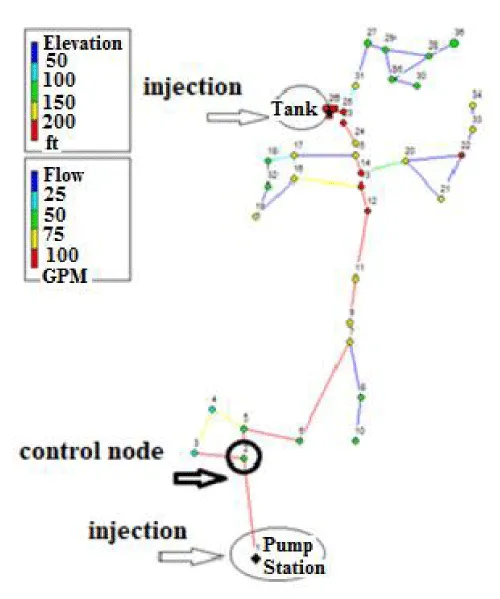
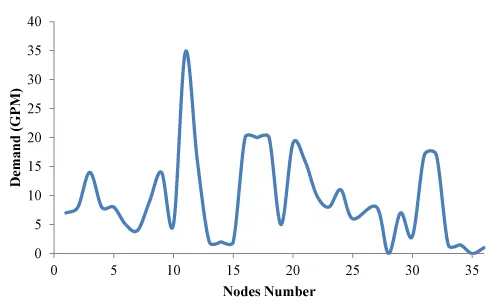
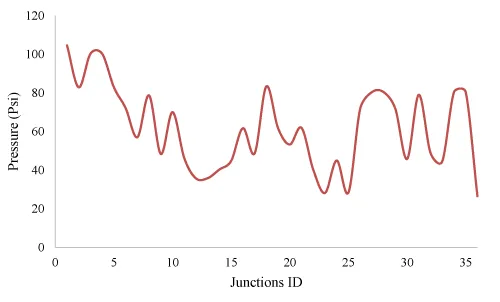
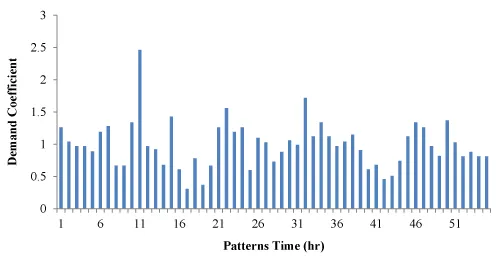
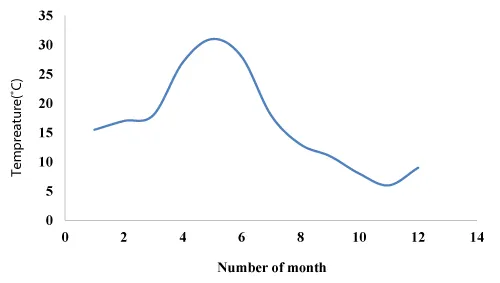
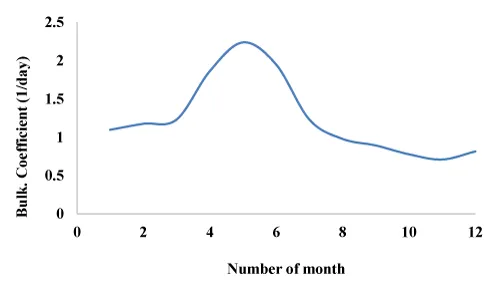
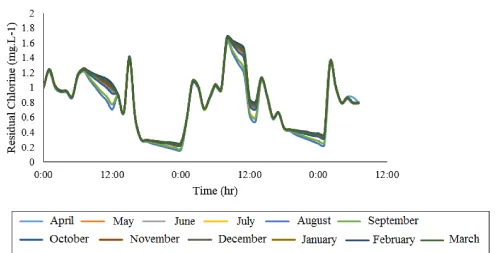
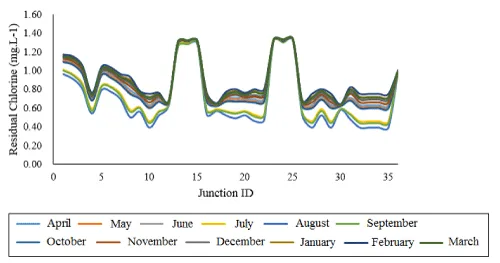
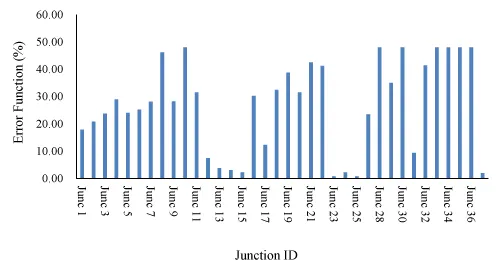

 Save to Mendeley
Save to Mendeley
